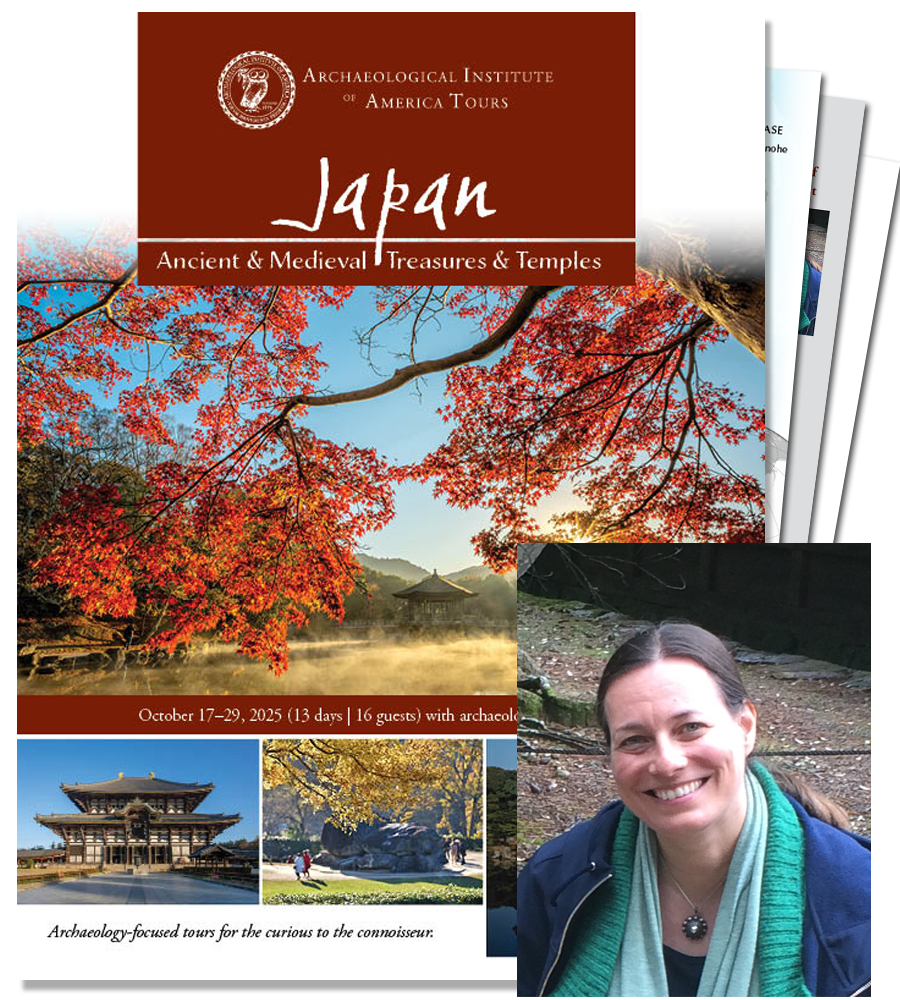Optional post-tour extension to northern Japan October 29 – November 2, 2025 (5 days)
Join us in Japan during the autumn season for this comprehensive, luxurious tour exploring the many elements that make Japan’s cultural and natural heritage exceptional. Appreciate firsthand the Japanese pursuit of artistic beauty in imperfection and simplicity. Visit several UNESCO World Heritage Sites and Japan-designated “National Treasures.” Together with our AIA lecturer/host, Dr. Ilona Bausch, and expert local guides you will learn about Japan’s prehistory, history, and culture from the remarkable early Jōmon culture to the present.
Highlights:
- Learn about Japan’s extraordinary prehistoric Jōmon culture through a variety of site visits and activities: visit the site of Umenoki, with its reconstructions of Jōmon pit houses; explore the Togariishi Museum of Jōmon Archaeology and the Shakado Museum of Jōmon Culture; participate in a Jōmon-style cooking demonstration; and try your hand at creating a small piece of Jōmon-style pottery.
- Admire the design and art of two impressive, ancient tumuli: Ishibutai Kofun, a tumulus from the late Kofun period (A.D. 300 to 538), formed by 30 massive stones weighing approximately 2,300 tons; and the Center for Preservation of the Kitora Tumulus Mural Paintings, where mural paintings and artifacts from the 7th/8th-century Kitora Tumulus are preserved and exhibited.
- Stroll through the beautiful, carefully designed grounds of several iconic temples, including Sensoji Temple, Tokyo’s oldest temple; Nara’s Todaiji Temple, with one of Japan’s largest bronze Buddha statues; and Kyoto’s renowned Kinkakuji Temple (“Golden Pavilion”).
- Gaze upon natural wonders such as Oishi Park, one of the five scenic lakes at the foot of Mt. Fuji and the best place to view Mt. Fuji; and Oshino Hakkai, a former pilgrimage site that is a collection of eight beautiful ponds fed by clear water from Mt. Fuji.
- Enjoy special events and meals, including a private tea ceremony; a winery visit, including a meeting with the owner and a wine tasting; a wadaiko (taiko) traditional drum lesson and performance; a special dinner with a geisha and a maiko (apprentice geisha); and two traditional, multi-course, kaiseki (Japanese haute cuisine) dinners.
- Relax and let the tour manager handle all the logistics, including porterage and bullet train transfers; and rest at luxurious 4- and 5-star hotels throughout.
- Join the 5-day, optional, post-tour extension to northern Japan.
Tour Prices (11 nights):
Per person, double occupancy
14-16 participants $11,545
11-13 participants $12,145
8-10 participants $13,745
Single Supplement $1,945
Single room supplement will be charged when requested or required (limited availability). With fewer than 8 participants, a small group surcharge may be added.
Post-Tour Extension Prices
per person, double occupancy (4 additional nights)
14-16 participants $5,495
11-13 participants $5,795
8-10 participants $6,295
Single Supplement (limited availability) $1,095
A single supplement will be charged when requested or required. With fewer than 8 participants, a small group surcharge may be added.
To reserve your space using the online form, click here.
For reservations or questions, please email us at aia@studytours.org (and include your full name) or call us toll-free at (800) 748-6262 (toll: 603-756-2884).
